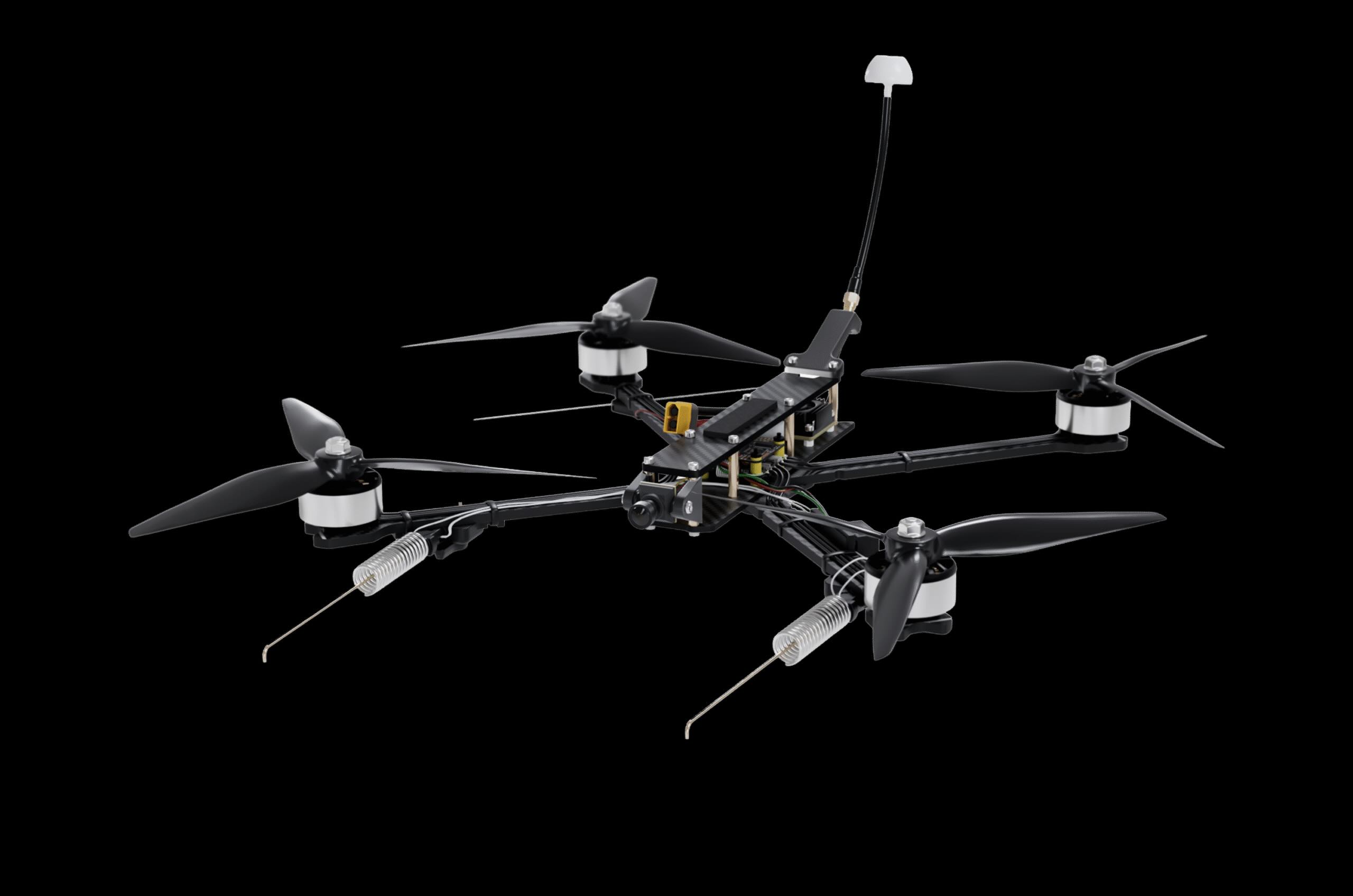


Drone maker Vyriy is integrating The Fourth Law’s TFL-1 machine-vision module onto its Vyriy-10 airframe, after several months of frontline trials with Ukrainian brigades.
The proposition is straightforward. An operator cues the target; once the onboard camera confirms a visual lock, the guidance computer assumes control for the terminal run. The developers say this approach sustains accuracy under electronic warfare and radio jamming—conditions that often break manual links at the most critical moment. Company figures claim a two- to four-fold improvement in successful hits for roughly a ten per cent increase in cost. Independent test data have not been published.
Price remains the headline. Vyriy states that the Vyriy-10 fitted with TFL-1 is priced at ₴18,500, placing it firmly within the FPV segment rather than among purpose-built loitering munitions. The retrofit philosophy is central: TFL-1 is a bolt-on terminal guidance unit designed for common FPV frames and payloads, intended to be produced at scale and replaced when airframes are lost to attrition.
The commercial context inside Ukraine is unusual as well. Confirmed strikes achieved with TFL-equipped drones are eligible for additional “e-points” within the country’s official battlefield incentive scheme. Units can redeem accumulated points on the state-backed Brave1 marketplace for equipment and services. The mechanism formalises a feedback loop between performance at the front and access to kit, although the adjudication criteria for verified hits are not publicly detailed.
From a Western vantage point, the concept is familiar but the packaging is not. Systems such as AeroVironment’s Switchblade 300 and 600 already provide aided target tracking and operator-in-the-loop retask or abort features. Teledyne FLIR’s Rogue 1, unveiled last year, points towards recoverable loitering munitions with modular payloads and plans for AI-assisted target recognition. In the United States, autonomy stacks like Shield AI’s Hivemind focus on navigation, teaming and tactical manoeuvre for larger uncrewed aircraft, while Skydio’s Autonomy is widely used for obstacle avoidance and inspection. All of these demonstrate elements of the same idea—computer-vision assistance and varying degrees of autonomy—but they sit at higher price points and are delivered as complete, certified systems.
Ukraine’s development track is different because needs are different. FPV drones at the front are consumables. Electronic counter-measures are dense. Procurement is distributed across volunteer networks, unit-level buyers and government programmes. In that environment, a guidance “kit” that can be fitted to a cheap airframe and replaced after loss offers a route to scale that Western acquisition processes rarely prioritise. The companies behind TFL-1 argue that the kit’s value lies in bringing a behaviour associated with loitering munitions—terminal guidance after hand-off—into the sub-$1,000 class.
There are caveats. The headline efficacy figures lack third-party verification, and there is no published data on recognition ranges, latency, false-lock rates or resilience against specific jamming techniques. Nor have the firms disclosed production volumes, monthly output targets or the training burden for operators transitioning from manual FPV flight to hand-off guidance. As with all autonomy claims, telemetry, video evidence and independent trials will determine how far initial results generalise across different terrains, weather and counter-measures.
Even so, the direction of travel is clear. The Fourth Law says it has codified both the TFL-1 module and an FPV variant known as Lupynis-10-TFL-1, a bureaucratic step that can simplify ordering and logistics among allies. The company also reported a first funding round in July from investors in the EU, the United States and Canada, signalling interest in scaling beyond bespoke batches. Vyriy, for its part, expects a measurable rise in confirmed hits as the TFL-1 configuration reaches units in larger numbers.
Policy helps explain why Western equivalents look different. The United Kingdom and the United States emphasise “appropriate human judgment” in the application of force. That has pushed programmes towards human-in-the-loop or human-on-the-loop designs with formal safety cases, wave-off features and detailed certification. Ukrainian developers likewise describe an initial human designation step before hand-off, but the emphasis is on keeping costs low, tolerating attrition and resisting jamming in a live, industrial-scale war.
If the companies’ claims prove durable, the implications are practical rather than theoretical. A low-cost autonomy add-on that materially raises strike efficiency could change the cost calculus of drone warfare at the bottom end of the market, where numbers matter and losses are expected. For partners watching Ukraine’s use of cheap uncrewed systems, the lesson is less about a single product and more about an approach: push useful autonomy into the most numerous platforms first, and accept that, at this tier, simplicity and price often outrank elegance.